A former factory worker sold almost everything he owned to buy an abandoned water tower and turn it into a sleek home. He wants to sell it next year but won't settle for less than $2.4 million.
Amanda Goh

- Robert Hunt spent two and a half years converting a water tower into a four-bedroom home.
- Hunt estimates he spent £750,000 on the project, including the cost of buying the property.
A water tower is an unlikely place to make a home, but Robert Hunt was determined to make it work.
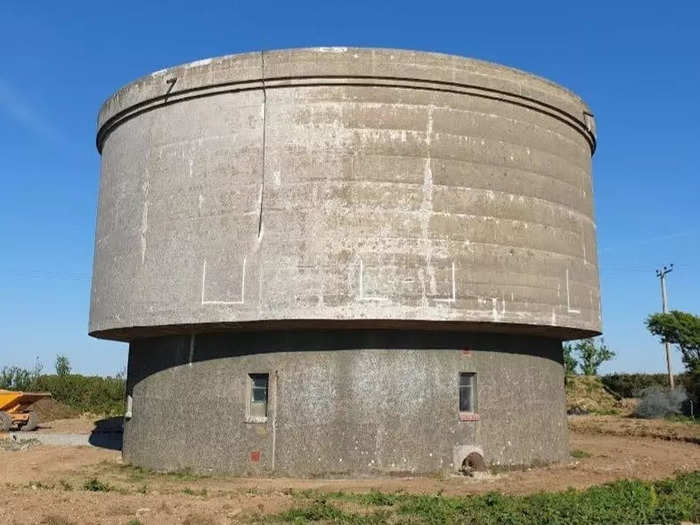
Hunt, who used to work in a factory in the filtration industry, was scrolling through real-estate listings when he chanced upon an old water tower. He had been looking for a property to fix up and was immediately intrigued by the listing.
"It was within 20 miles of where I lived, so basically local. I could see there was an opportunity with it and the price was pretty good for the size of the property and the land that came with it," Hunt said.
People close to him, however, weren't so convinced.
"They probably all thought it was either not going to happen or that I was just mad to even think about it," Hunt told Insider about the reactions from his friends and family. "But if it was easy then everyone would do it, wouldn't they?"
He ended up buying the property, located at Cloverly Cross, in November 2019 for £150,000, per property records.
The water tower, which was decommissioned in the early 2000s, had been sitting empty for years, Hunt said. Inside the tower was a large, empty space with no rooms, no interior walls, and no windows.
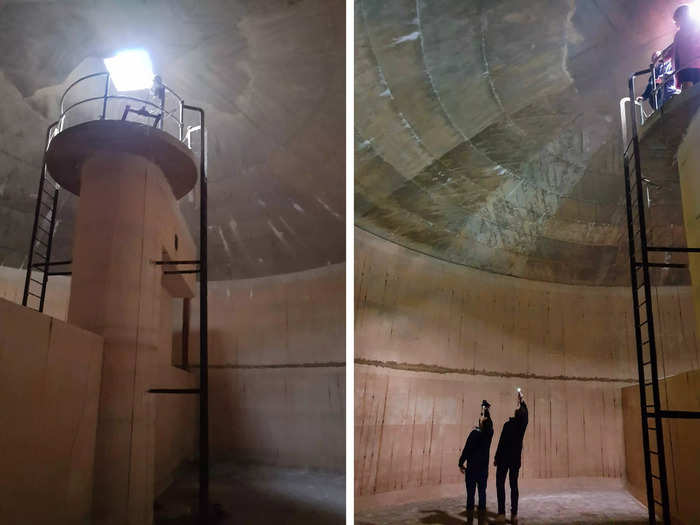
The interiors were almost bare, save for a few electric panels and water pipes from its early days.
"When I first viewed it, it was hard to describe. No windows, and no stairs — you had to go up a ladder in the center of the tower to get to the top of the tank," Hunt said.
The lack of windows also meant that he had to guess what the views would look like, he added.
"I almost imagined the layout, which is not far off what it is today, pretty quickly after a couple of viewings at least," Hunt said.
Hunt started work on the water tower in December 2019. For the next two and a half years, he worked with architects and builders to transform the property into a home.
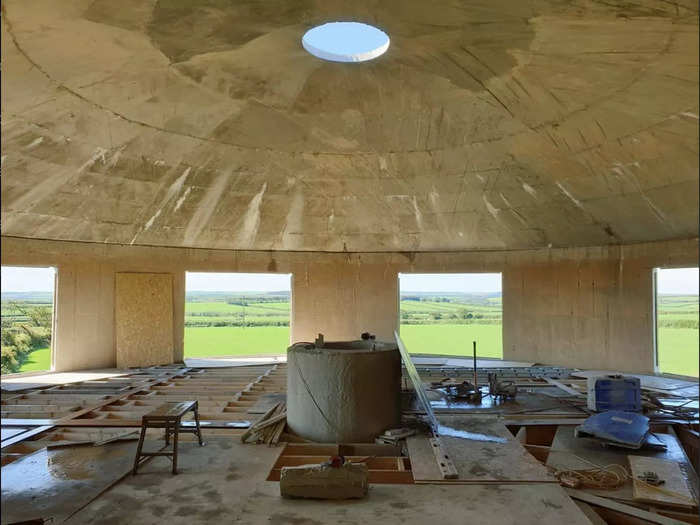
Initially, Hunt juggled his full-time factory job while working on the house with a builder friend of his.
"I carried on working full-time for the first six months, and then sold my house, quit my job, and I've been on it full-time since," Hunt said.
Hunt moved into a mobile home on-site in July 2020, alternating between living there and at his girlfriend's home about 10 miles away.
Hunt helped out wherever he could throughout the entire conversion, he said: "I've basically been like a laborer, doing bits and pieces, and project-managing it."
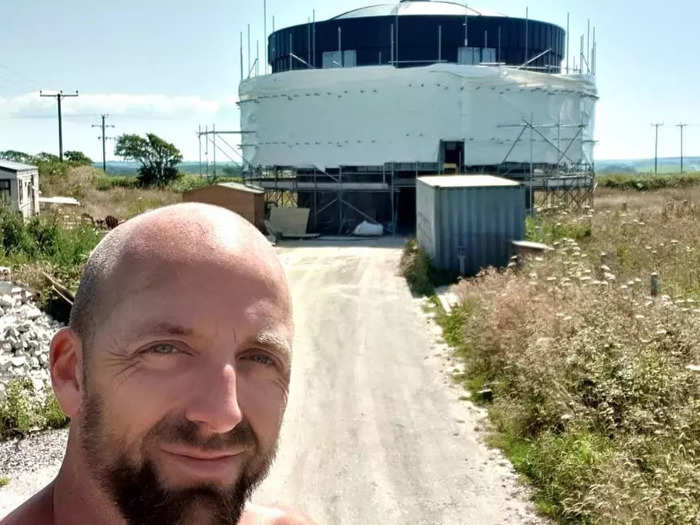
"I had three property rentals before, rented out to tenants, and I'd do the odd DIY painting, decorating, helped with kitchens and bathrooms but I'm not in a trade," Hunt said.
Although he has some general DIY experience, Hunt admits that this project "was another couple of levels up" from everything else that he's done before.
"Basically, you just pick up a few skills on the way I suppose. And that's where I'm at now," he added.
Hunt estimates that he spent around £600,000 on the entire conversion. He moved into the water tower in May 2022, when the renovation was completed.
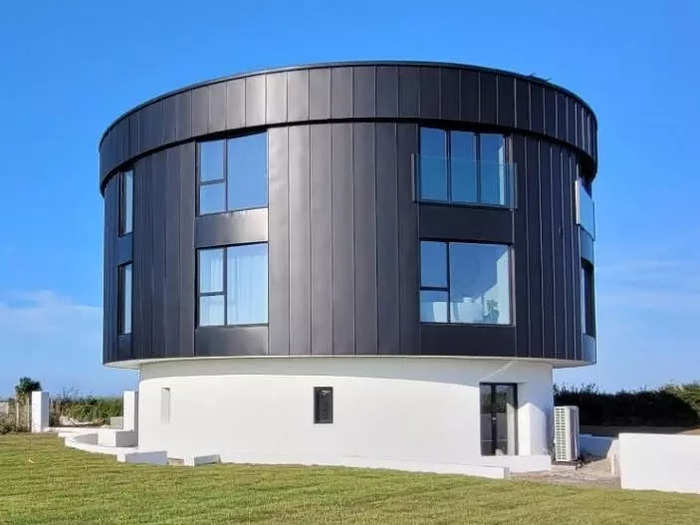
Hunt turned the derelict water tower into a sleek three-story home. Instead of keeping the exposed concrete exterior, he covered the tower in black cladding and painted the base of the house white for a contrasting look.
Windows now go around the entire building, offering panoramic views of the surrounding English countryside.
"The black cladding on the outside, the white render on the bottom, the layout inside, the windows, and other things were all my ideas. There was an architect involved, but they just drew up 90%, 95% of what I envisaged," Hunt said.
The house has a circular floor plan, with sleek white interior walls and doors.
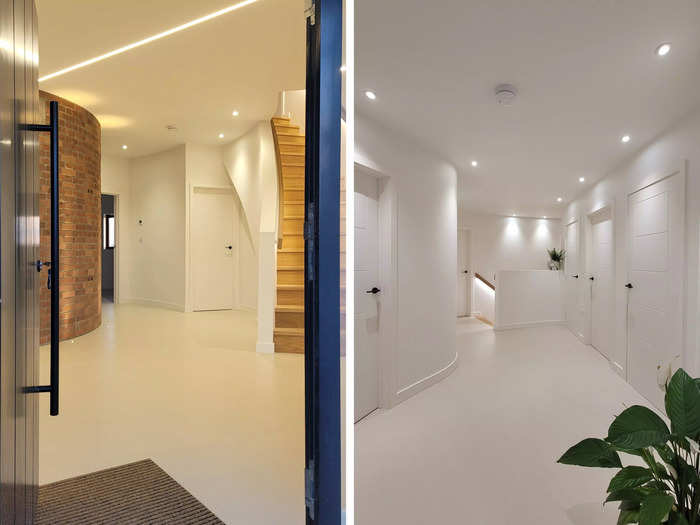
The first floor is where Hunt's plant rooms and cloakrooms are located. There's also a spare bedroom and a bathroom, he said.
Hunt designed the bathroom to be in the center of the circular space, in a room that was once part of the original access shaft of the water tower.
Although the transformation was satisfying, Hunt admits that the project was challenging in multiple ways.
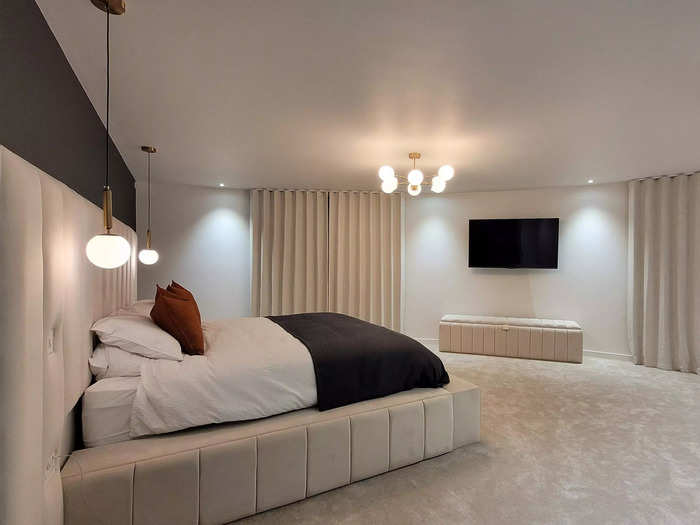
Apart from the mundane and time-consuming tasks like screwing or fixing things together hundreds of times, the harsh weather during winter made it difficult to complete even the simplest tasks, Hunt said.
"When I was in the mobile home on-site, in the middle of winter, the weather can be quite draining when it's a week of wind and rain," Hunt said.
The master bathroom — which is on the second floor — is Hunt's favorite spot in the house.
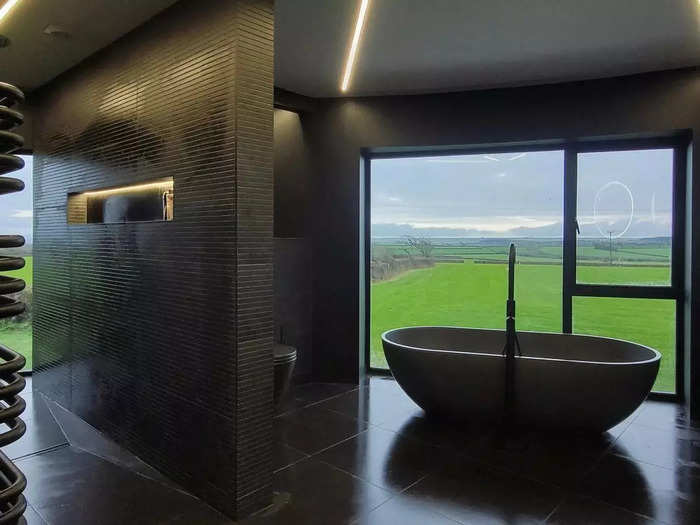
Everything in the master bathroom is black, including the floor tiles and walls. Apart from a double shower and a double basin, there's also a black freestanding bathtub in front of a large window that overlooks the landscape outside, Hunt said.
"I'm happy with that because it's quite a bold thing," he added. "People think it's going to be too dark or a bit like a cave but you got big windows, big views, and it's worked out really well."
The primary living area, the dining room, and the kitchen are on the highest floor. The space has an open floor plan with windows that go all around its walls.
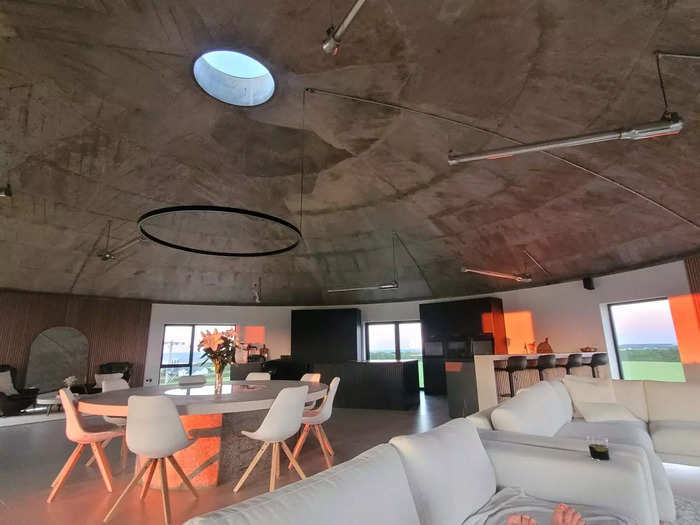
Hunt kept some of the original exposed concrete in the interiors, including the ceiling and at the base of the dining table.
"Because I wanted to keep the original ceiling exposed on the inside, all the insulation on the roof and the walls had to be done on the outside of the original concrete structure," Hunt said. The insulation was then covered up by the black exterior cladding, he added.
The dining area sits at the center of the highest floor. It was built over the original water tower access shaft, which can still be viewed through a glass panel in the middle of the table.
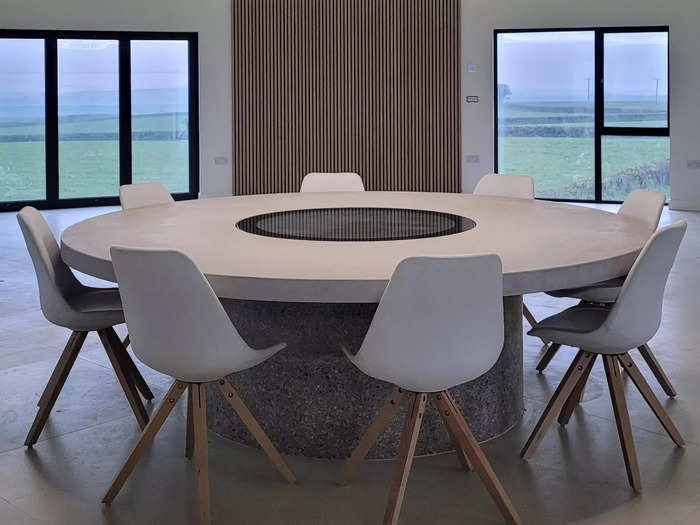
"When you look down inside the dining table on the top floor and if you look up from the ground floor bathroom, you can see the original access shaft with the ladder still inside it," Hunt said.
While the ladder has been shortened and turned into a feature for people to look at through the glass, Hunt says that it's still functional.
"I've been down there in the shaft, but it's not like a day-to-day thing. It's only for like if you want to clean it," he added.
One of the most difficult parts of the project was making sure the fixtures fit the curved walls of the water tower.
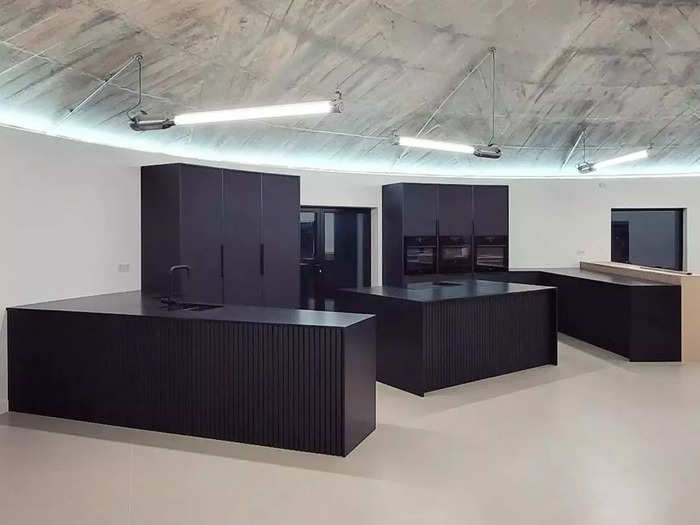
"It's what you don't see behind the walls that are difficult, like curving the plasterboard, the timber, and the plywood on the outside before the cladding, " Hunt said. "Nothing's sort of meant to be round — it's all bespoke pieces."
Hunt has some advice for those who want to do the same: It'll take twice as long and cost twice as much as you would initially expect.
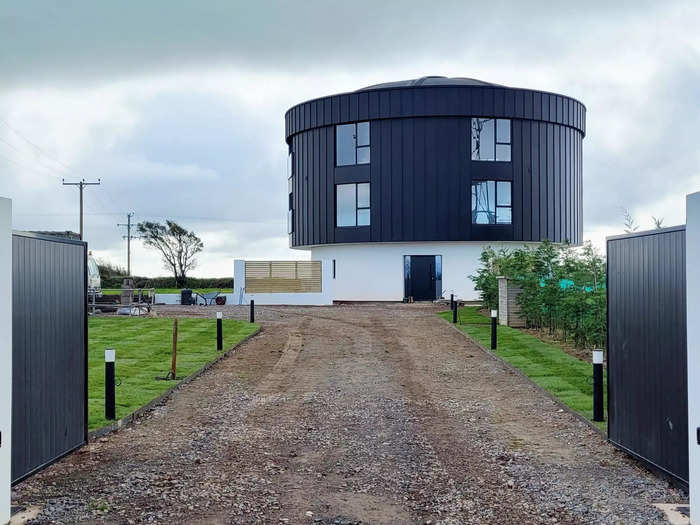
"I was probably a bit naive going into it, but I wasn't a builder or anything like that so it's hard to know exactly everything that's involved," Hunt said.
Despite that, it was helpful for him to be able to work with and consult his builder friend about the conversion.
"His knowledge of the building trade has been invaluable, so to have someone like that as a friend or as an advisor is really handy," Hunt said.
And although the renovations took longer and cost more than he expected, Hunt says he thinks that it was all worth it in the end.
"I would definitely say to go for it. Anything property-wise is worth doing if there's a potential for a profit at the end or even if it's just somewhere you want to live for the rest of your life," Hunt added.
Hunt says he plans to sell the house next summer, but he's not ready to settle for just any offer.
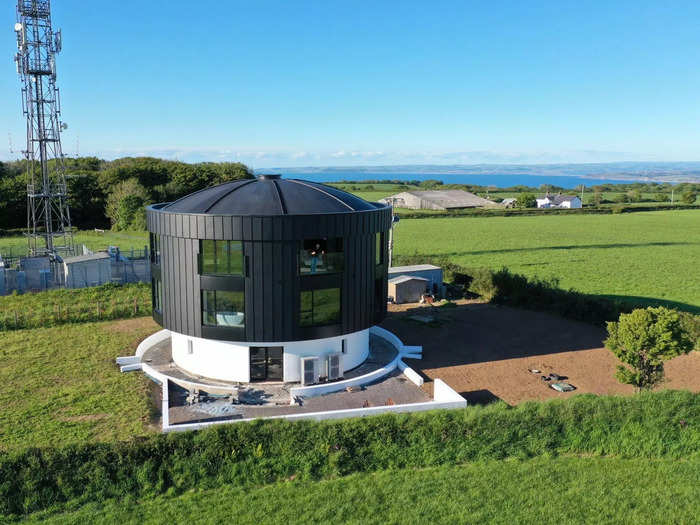
To fund this project, Hunt sold his original home and his rentals and borrowed money from his parents. He plans to use the profits from the sale of the water tower home to repay his parents and start a new project, he added.
"It could be anything, again, something with potential. I do like it to be a bit different but I'll never really match this one. This is a big, big project," Hunt said.
The house is located in Clovelly Cross in Devon. The nearest town, Bideford, is 15 minutes away by car, per Google Maps.
Hunt expects the buyer to be a city person who's looking to move to the countryside or someone who is looking for a second home.
While he says that the property has been valued by two separate agents at over £1.8 million, he's looking for more.
"I wouldn't really want to sell it for less than £2 million, to be honest," he added.
Popular Right Now
Popular Keywords
Advertisement